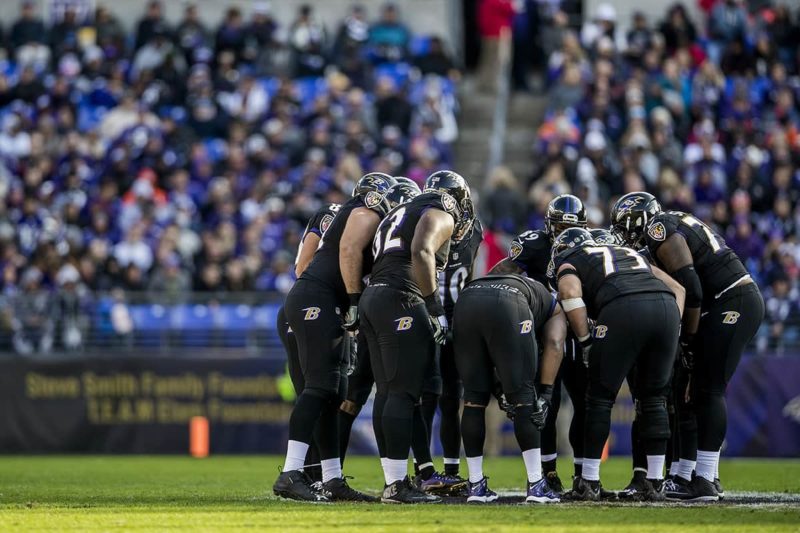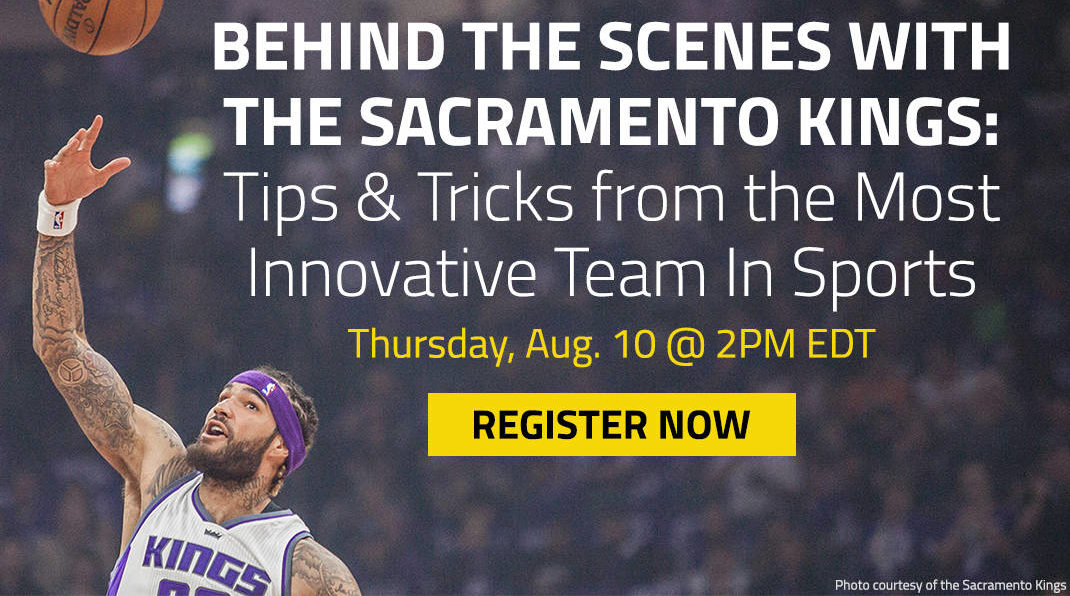Sports fans have an insatiable demand for content. They want to know everything about their favorite teams, from score updates during the game to behind-the-scenes stories about the players. Teams are constantly creating new photos, videos, GIFs, graphics, and more to engage their fans.
The challenge here is that storing, organizing, and sharing visual content isn’t easy. Teams struggle to get their best assets out to their fans in real-time. Once the game is over, photographers have to mail or hand-deliver hard drives of photos. Team members attempting to transfer video clips throw up their hands in exasperation. Looking for photos from a previous season (or worse, a previous decade) turns into hours of searching through folders on a server or CDs.
Enter digital asset management (DAM). Teams that use digital asset management systems are able to eliminate common roadblocks and get content out to their audiences faster.
Here at PhotoShelter for Brands, we work with half of MLB teams, half of the NFL, and a range of other professional sports teams, leagues and organizations. We’ve asked them to share how they streamline their workflows and power their visual storytelling with DAM.
Here are 5 ways professional sports teams use digital asset management
1. Share photos to social media in real-time
You might think of a DAM platform as a place to store your team’s archive, but it’s also a dynamic tool that can help your team work faster every day – especially when news is breaking.
The Colorado Rockies use FTP to send photos from the team photographer’s camera straight into their cloud-based media library. In seconds, the digital media team can access the photos and send them to social media. Fans get to see and share the best quality images from the game as soon as they happen.
“I’d say that’s one thing that sets us apart from other clubs is the quick access to our photos and sharing photos in real time.” – Julian Valentin, Assistant Director of Digital Media & Publications, Colorado Rockies
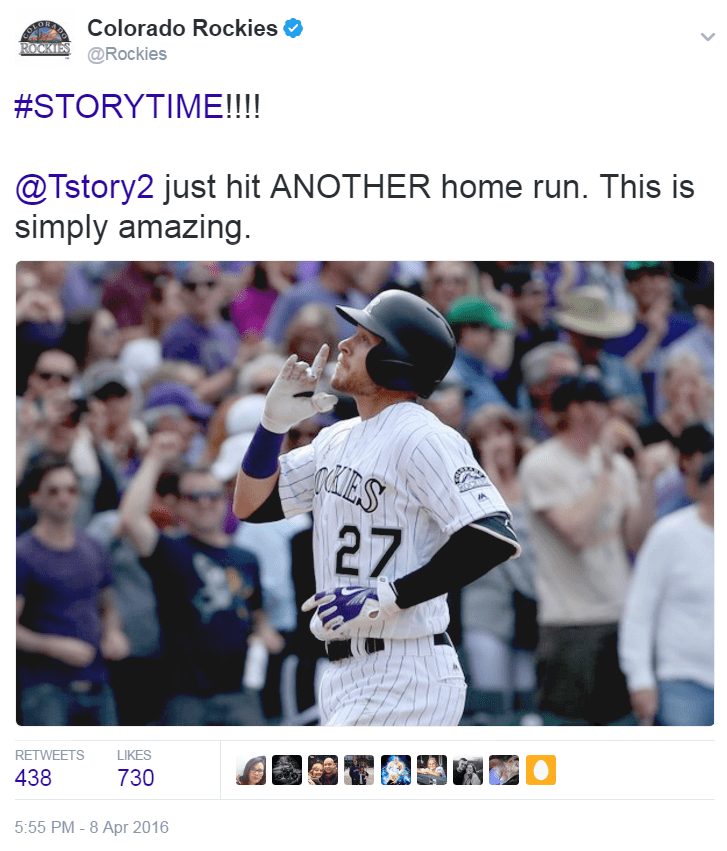
Get a step by step look at the Rockies’ real-time photo workflow.
2. Save time finding and sharing photos
In addition to speeding up your in-game storytelling, DAM can help you cut steps out of your day-to-day workflow.
The United Soccer League (USL) decided to invest in digital asset management in hopes of saving time for both the league and its member teams. Before, the league’s collection of thousands of photos was housed in a basic file structure on a server, which made searching for assets time consuming and tedious.
Now, everything is centralized in one easy-access media library. The images are tagged with robust metadata, so anyone looking for an image can run a quick keyword search to find exactly what they need in seconds.
Staff members from the USL and its member teams can upload, download and share images, all through the same cloud-based library. They no longer need to worry about emailing photos and hitting inbox restrictions.
“To me, it’s a necessary element of operations now.” – Steven Short, Vice President of Business Development, United Soccer League
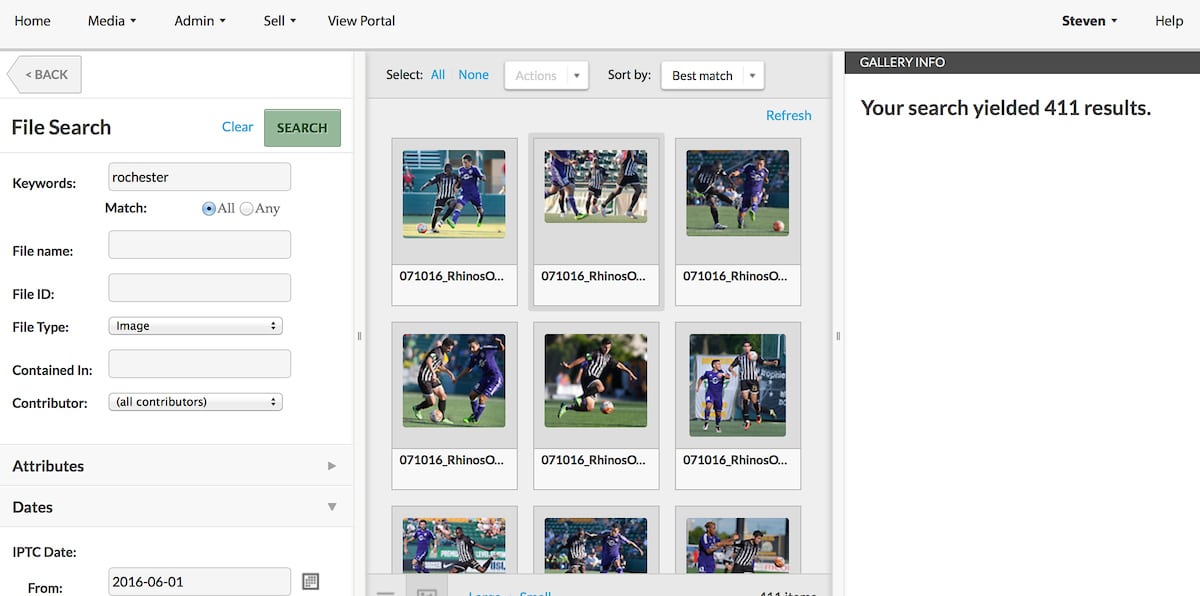
Find out how digital asset management is making a difference across the league.
3. Power corporate sponsorships
With DAM, all your creative assets are always at your fingertips.
The Baltimore Ravens’ entire archive from 1996 up until now is stored on PhotoShelter for Brands, so they can dig into their collection by running one quick search.
Every week, the team shares sponsored images, like a Throwback Thursday photo and a Photo of the Week. These popular social media posts are a great way to engage fans and generate revenue through sponsorship.
“Libris [now, PhotoShelter for Brands] has impacted maybe a quarter to half of our building, along with outside sources such as corporate sponsors and outside media… I think just making things more efficient, not just in my role but for our corporate sales team and our pr team, as well. It’s definitely streamlined everyone’s process.” – Erin Herbert, Digital Media Manager, Baltimore Ravens
Watch our Behind the Scenes with the Storytellers video case study with the Ravens and check out 15 ways they use digital asset management to optimize their media production workflow.
4. Get more from every creative asset in your library
When you have easy access to all your creative assets, you can use them to their full potential. You reduce the risk of wasting, forgetting about, and even recreating valuable assets.
Before using a DAM system, the Sacramento Kings struggled with file sharing. Photographers hand delivered cards or sent them to the team using Dropbox or a .zip file. The Kings were constantly running out of server space, and they didn’t have a centralized location for all their assets.
Now, they can easily browse and search all of their photos, share them quickly, and incorporate them into their storytelling.
“Before, it was photo after photo being taken and not being used, not being used the right way, or just sitting on a server. I would say 80-85% of the photos weren’t being used properly.” – Ryan Brijs, Creative Director, Sacramento Kings
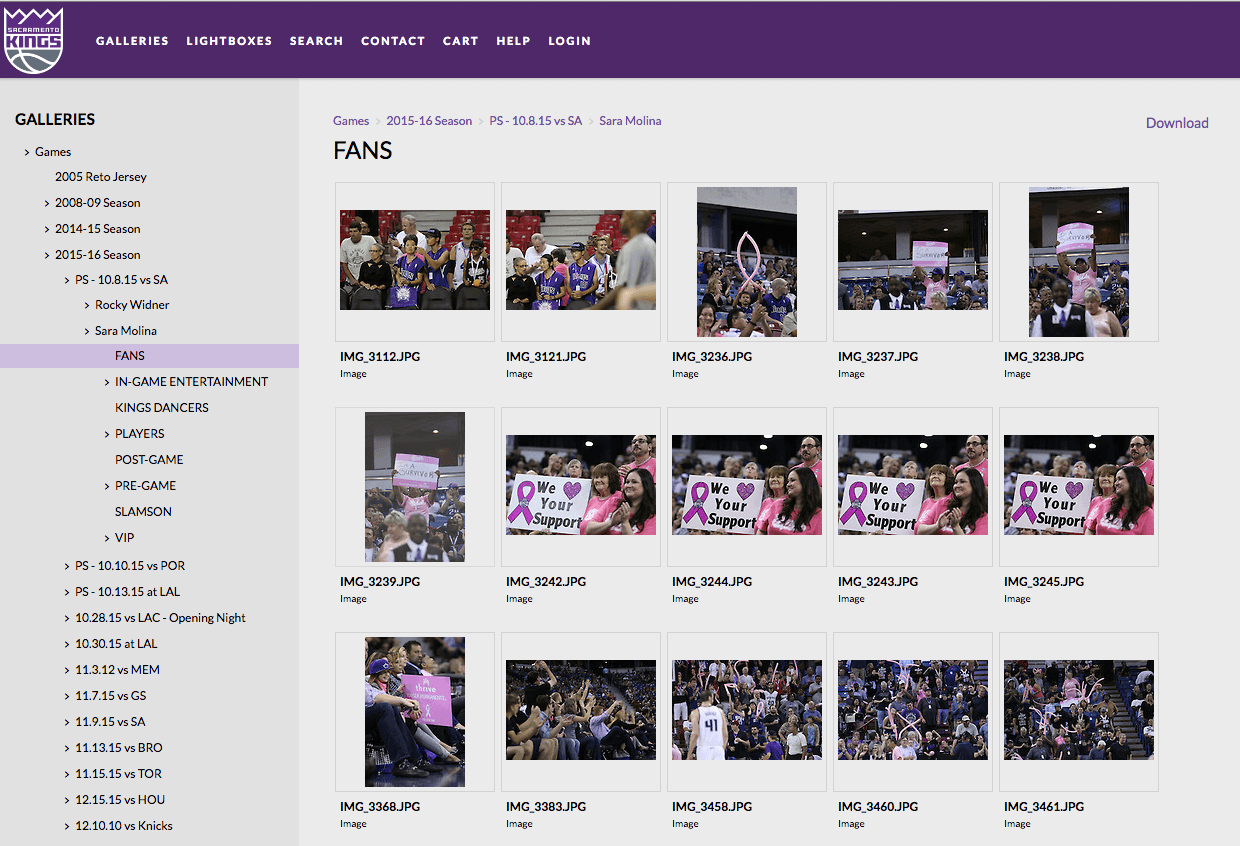
Learn more about how the Kings maximize visual content ROI with DAM.
5. Preserve your brand’s history
As you invest in visual assets, it’s important to have a way to protect them and make sure they’re available for years to come. On top of all of the benefits listed above, digital asset management allows your team to keep an archive of all of the most important moments in your history.
“I think it’s important to get photos of these important experiences to keep on file so we can go back and use them for content later in the future, and to also keep a record of it. It’s really neat to see a team huddle from ten years ago that was led by Ray Lewis and then one from today that’s led by Terrell Suggs, and you still see the team camaraderie.” – Erin Herbert, Digital Media Manager, Baltimore Ravens
Have more ideas for how you can use DAM in pro sports? Share them with us @psforbrands!
Cover photo by Shawn Hubbard / Baltimore Ravens.
